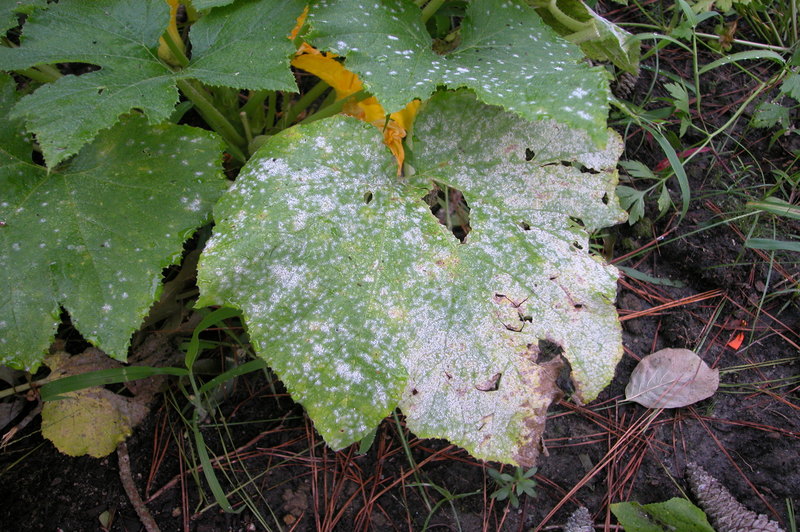Powdery mildew is one of the common diseases growing plants could encounter. To catch and treat it, you need to know what does powdery mildew look like in the first place.
Unlike the usual fungi-causing microorganisms, powdery mildew grows in dry places and warm weather conditions. This disease usually results in mild cases, but the powdery mildew virus can severely infect your plants without proper treatment or intervention from the owner.

Fortunately, an infected plant doesn’t easily contaminate other nearby plants. Mildew spores that cause the fungal disease are airborne and require moderately high humidity levels to spread across your garden.
In this article, we’ll provide a list of symptoms for you to detect the actual powdery mildew disease and help you treat it as early as possible. Best of all, we’ll list down several tips to help you prevent any fungal infections from harming your precious plants.
What Are The Symptoms Of Powdery Mildew Disease?
Perhaps you have seen powdery mildew leeching on your plants many times—you just don’t recognize it. Recognizing the symptoms is one step forward to the early treatment of the scrounging powdery mildew disease before it ultimately harms your entire garden.
If you notice the signs listed below, powdery mildew is probably coming to poison your plant.
1. White powder sprinkled on leaves
When powdery mildew starts to grow on plants, you will see a flour-looking powder scattered on the top side of the leaves. Stems, the underside of the leaf, or even the fruit can be the dwelling place of plant mildew.
The powdery patches can appear as white to grayish in color. This may occur on most of the leaf parts, if not entirely.
It’s also not impossible to encounter whiteflies while growing your garden. If you’re kind of new to gardening, here’s an article on how do you get rid of whiteflies to help you in this scenario.
2. Yellow to black leaves
As the infection progresses, leaves turn yellow after they become covered entirely by white circular spots. The yellow can turn black as the leaves become dried out if the disease is not given immediate attention.
3. Distorting and bending leaves
The fungus will cause some of the leaves to break, twist, and disfigure. The mildew feeds on the nutrients of the plant, causing the leaves to dry and wilt.
New outgrowths and leaves can also prematurely age before they succumb to the infection. They will eventually wither and drop out of the plant.
Although the mildew typically leaves out flowers and fruits, the diseased plants can bloom or grow sluggish and yield poor quality crops when the infection becomes severe.
What Are The Plants Susceptible To Powdery Mildew Infection?
Generally, there are no plants immune to plant diseases like powdery mildew. However, you might want to check if your plant is one of these types that dusty mold commonly loves to leech into:
- Cucurbit plants such as zucchini, cucumber, melon, and squash
- Tomatoes, peppers, grapes
- Flower plants like zinnia, chrysanthemum, roses, dahlias, sunflowers
While numerous plants are more vulnerable to fungus infection, one infected plant in your garden would not mean spreading the disease to another plant nearby. This is because there are mildew-causing fungal species that attack a specific plant type only.
Treating Powdery Mildew Using Organic Remedies
This is your next question after finding out that your plant indeed has a powdery mildew infection. Take note that it’s essential to perform proactive and persistent actions when treating this plant disease as you observe the initial indications of infection.
With the wonders of an all-natural treatment, you can prevent powdery mildew from further weakening your plants and spreading the disease to the same plants. To do this, you may follow any of the following organic remedies:
Milk
Spraying a mixture of one-part milk to two-part water on the leaves every week has experimentally shown promising results. It is because milk has compounds that help combat the disease and strengthen the plant’s immunity.
Baking soda (sodium bicarbonate)
Combining this ingredient with mild liquid soap and water can make an effective medicine. Spraying this on the entire plant as soon as you detect the first symptoms can do a lot in preventing plant damage.
Biological fungicide (bio fungicide)
Many bio fungicides are approved as organic, so it’s safe and guaranteed to be effective against fungi. It also doesn’t leave chemical residues.
Liquid copper fungicide
It is also certified as organic and can control other types of bacteria apart from powdery mildew.
Water
Straight, free water can combat and splash off any spores attempting to live on the plant’s surface. However, the dampness it may cause can trigger mold growth in your garden, especially on your growing seedlings.
To identify how to get rid of mold on germinating seeds, read this guide for helpful instructions on elimination and prevention.
Conclusion
Recognizing what does powdery mildew look like equates to knowing the immediate treatment you can apply to control the fungal disease before it altogether harms the wellness of your plants. Additionally, you can choose from varieties of remedies; you can go for conventional fungicides or choose from the lesser-known options—the safer, organic treatments.
